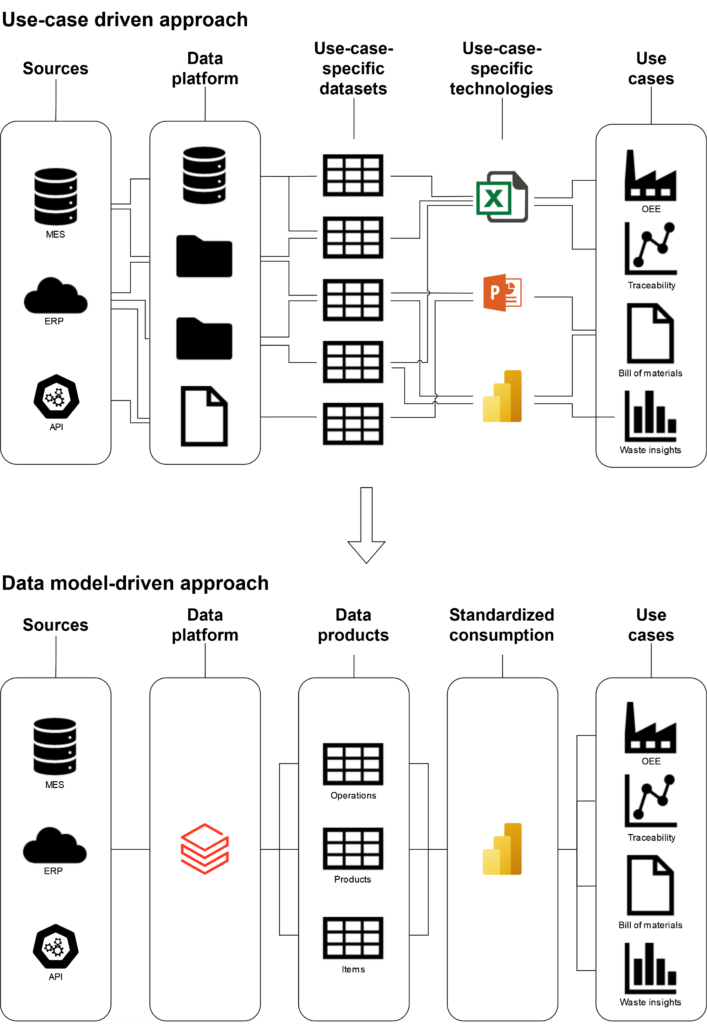Bootstrap Azure Subscription for DevOps
This is the second blog post of the blog series about Titan 2.0.
In the early days of data management, companies didn't appreciate the complexity and potential of data as they do today. Initially, data collection and processing was siloed, with each department or team managing data for specific immediate purposes. Each use case was approached as an independent project, with disparate systems and technology, and its own interpretation of data, resulting in inconsistent metrics and definitions. These discrepancies in the way companies interpret data can create risks for decision-making. A strategy to prevent falling for these pitfalls is the data model-driven approach, which we will discuss in this blog post.
The data model-driven approach revolves around the idea that the data model itself should be the cornerstone of the data architecture, rather than being shaped around specific use cases. This doesn't imply ignoring business needs but rather anticipates the evolving nature of those needs. By focusing on creating a robust, flexible, and inherently scalable model from the outset, organizations can ensure that their data platforms are prepared for future requirements, not just current demands.
A practical example of transitioning from a use-case driven approach to a data model-driven approach is visualized in below diagrams. The example is focussed on four use cases that can be relevant in the production department of companies. For more information about the use cases, chech our previous blog posts: OEE, traceability, and waste reduction. The first diagram represents a use-case driven approach and the second diagram a data model-driven approach. In the first example, companies can have difficulties with standardizing the interpretation of the data.
Take the cost price calculation as example. Do you take into account the raw materials, labor, depreciation of machines and storage costs? What about the variable energy costs or energy return of solar panels? The data model-driven approach solves these questions by ensuring one representation of each 'data product' in the data platform.

Adopting a data model-driven strategy requires a shift in mindset from merely addressing current needs to envisioning a data architecture that can easily adapt to change. It involves:
The shift from a use case-driven to a data model-driven strategy in data platforms represents a fundamental change in how organizations approach data architecture. By prioritizing flexibility, scalability, and future-readiness, businesses can create data platforms that not only meet today's needs but are also equipped to handle the challenges and opportunities of tomorrow.
A data model-driven approach prioritizes the structure of the data model as the foundation of a data architecture. This approach is focussed on long-term flexibility and scalability to accommodate evolving business needs.
In a data model-driven approach, data governance is crucial for managing the consistency, quality, and evolution of data models. It also ensures they remain aligned with organizational goals and regulatory requirements.
A data model-driven approach elevates the role of data architects and engineers.It requires them to think strategically about long-term data structure and governance, rather than focusing solely on immediate use-case solutions. For more information, read the blog about the role of a data person.